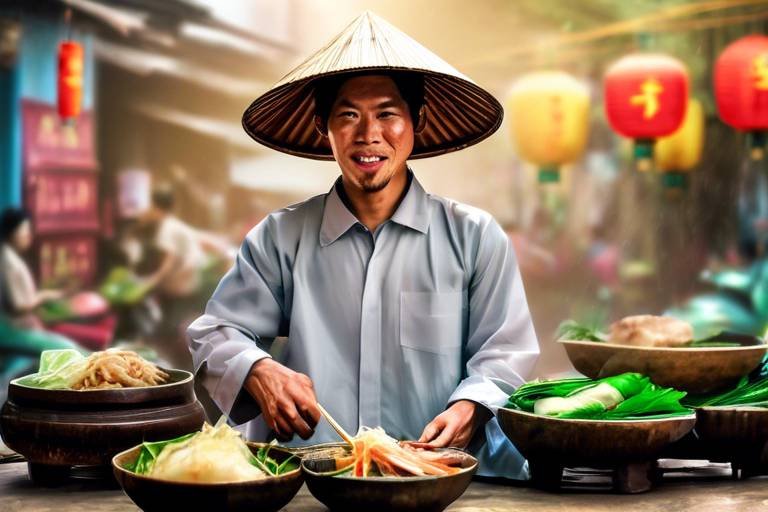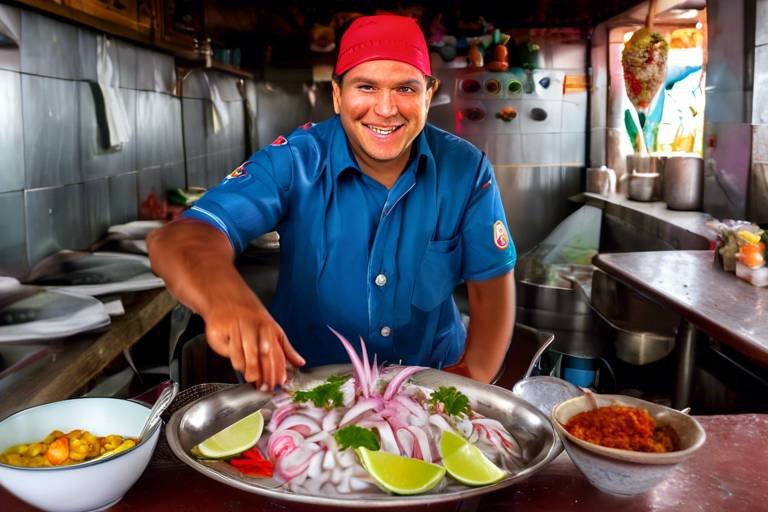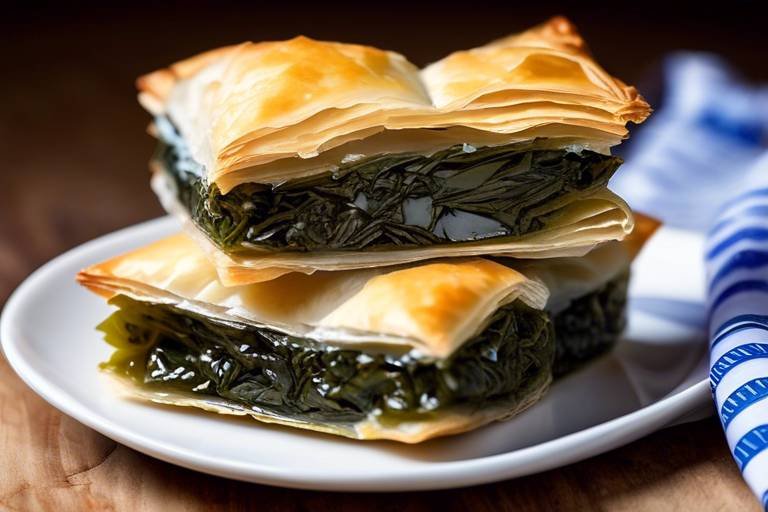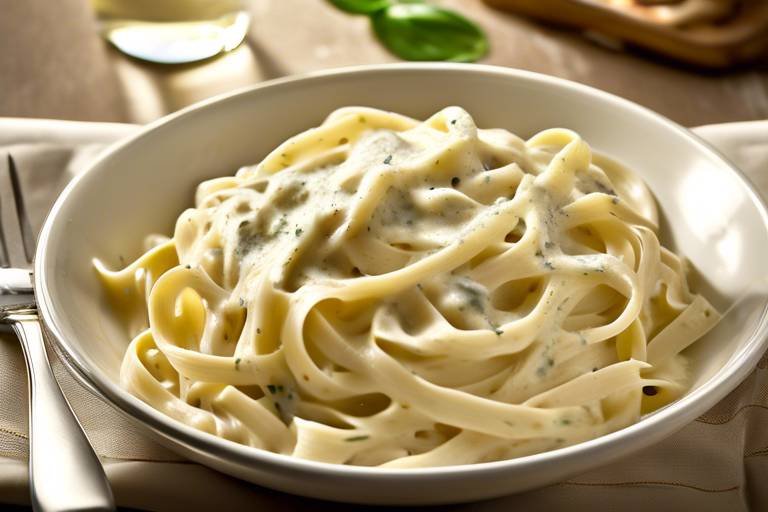Traditional Chinese Hot Pot - Recipes and Tips
Are you ready to embark on a culinary journey through the vibrant world of Traditional Chinese Hot Pot? This beloved communal meal is not just a dish; it's an experience that brings people together around a bubbling pot of flavorful broth, an array of fresh ingredients, and a symphony of dipping sauces. Let's dive in and explore the rich tapestry of flavors, history, and tips that make Chinese hot pot a dining adventure like no other.
Originating from ancient cooking practices, Chinese hot pot has evolved into a popular dining tradition that embodies the essence of sharing and togetherness. As the bubbling broth simmers at the center of the table, diners gather around to cook a variety of ingredients, each adding their own touch to the communal pot. It's a culinary experience that transcends mere sustenance, offering a feast for the senses and the soul.
When it comes to hot pot, the broth is the heart and soul of the meal. From fiery Sichuan broth that packs a spicy punch to delicate clear chicken broth that highlights the natural flavors of the ingredients, the choice of broth sets the tone for the entire dining experience. Whether you prefer a rich mushroom-based broth or a fragrant herbal broth, each type brings its own unique character to the table.
As you prepare for your hot pot feast, the selection of ingredients plays a crucial role in creating a memorable meal. From thinly sliced meats that cook in seconds to an assortment of fresh seafood, crisp vegetables, and springy noodles, the possibilities are endless. Choose a balance of textures and flavors to create a harmonious blend that tantalizes your taste buds with every bite.
No hot pot experience is complete without an array of dipping sauces and condiments to elevate the flavors. Mix and match sesame paste, soy sauce, vinegar, and chili oil to create your perfect dipping concoction. Experiment with different combinations to find your favorite flavor profile and customize each bite according to your preferences.
Mastering the art of cooking in the hot pot requires a delicate balance of timing and technique. While thinly sliced meats and delicate seafood cook in a matter of seconds, heartier vegetables and robust noodles need more time to simmer and soak up the flavors of the broth. Keep an eye on the pot, and adjust the cooking times to ensure that each ingredient is perfectly cooked to your liking.
Hot pot dining is not just about the food; it's also about the shared experience and camaraderie around the table. Embrace the communal aspect of the meal by engaging in lively conversations, sharing food with your dining companions, and savoring each moment together. Remember, good food tastes even better when enjoyed in good company.
Aside from being a delicious and interactive dining experience, hot pot also offers potential health benefits. The nourishing broth, packed with vitamins and minerals, provides a warm and comforting meal that is both satisfying and nutritious. By choosing a variety of fresh ingredients and incorporating plenty of vegetables and lean proteins, you can enjoy a wholesome hot pot meal that nourishes both body and soul.
Ready to host your own hot pot party? With a few practical tips and some preparation, you can create a memorable dining experience for your guests. Set up the dining area with a central hot pot station, prepare the ingredients in advance, and provide a selection of dipping sauces and condiments for everyone to enjoy. Get ready to impress your friends and family with a hot pot gathering they won't soon forget.
As you embark on your hot pot adventure, remember that the true essence of this culinary tradition lies in the joy of sharing a meal with loved ones, the thrill of discovering new flavors, and the warmth of a bubbling pot that brings people together. So gather your friends, prepare your ingredients, and get ready to immerse yourself in the delightful world of Traditional Chinese Hot Pot.

History of Hot Pot
The traces back to ancient China, where it was believed to have originated during the Eastern Han Dynasty. Initially, hot pot was a way to preserve food during winter months by cooking it in a simmering broth. Over time, this cooking method evolved into a communal dining experience, where friends and family gathered around a steaming pot to share a meal and stories.
Hot pot gained popularity across different regions of China, with each area adding its own unique twist to the dish. The tradition of hot pot continued to evolve, becoming a beloved culinary practice that symbolizes togetherness and sharing.
Today, hot pot is not just a meal but a cultural experience that brings people together around a bubbling pot of broth, creating memories and connections that last a lifetime.
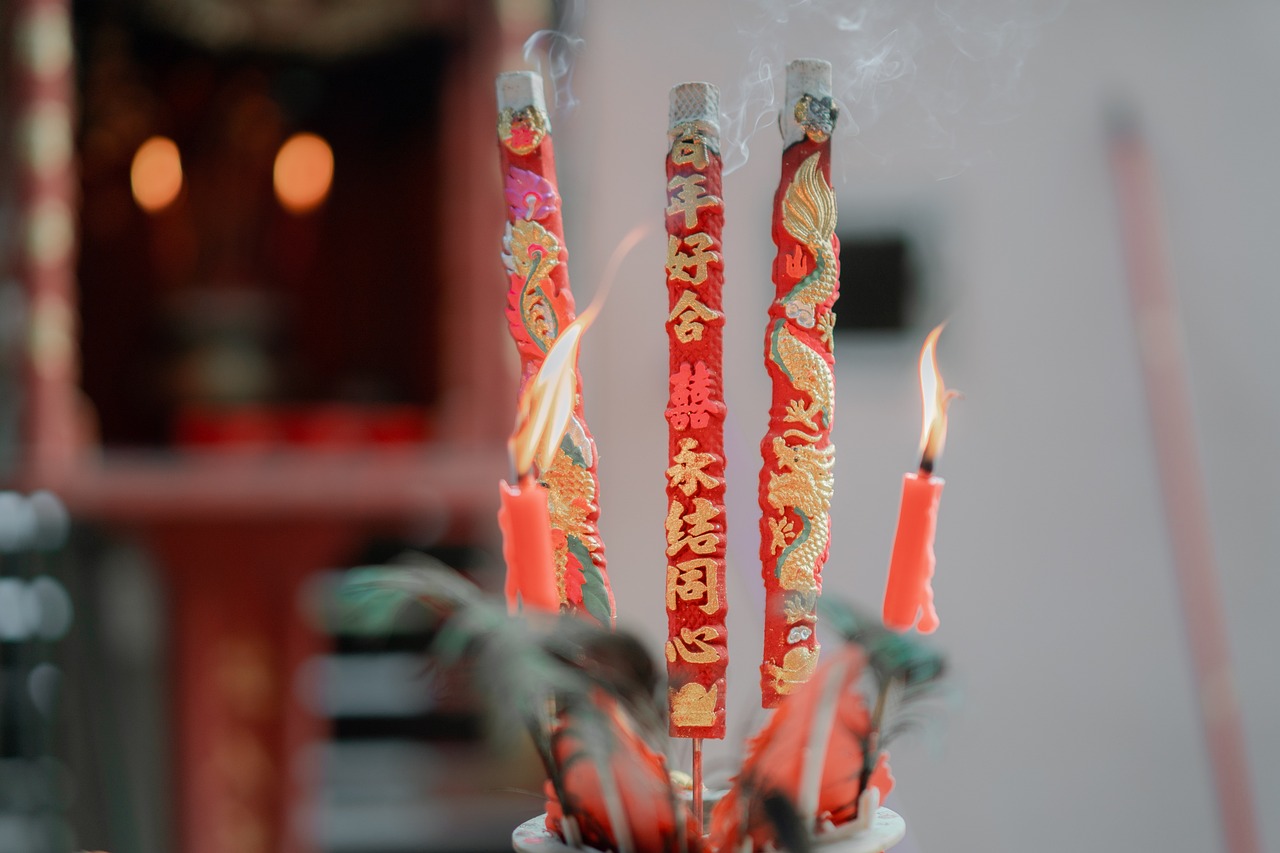
Types of Hot Pot Broths
When it comes to traditional Chinese hot pot, one of the key elements that truly defines the experience is the variety of flavorful broths that serve as the foundation for this communal meal. These broths not only infuse the ingredients with rich and aromatic flavors but also provide a unique dining experience that caters to different taste preferences.
One of the most popular types of hot pot broth is the spicy Sichuan broth, known for its bold and fiery flavors that pack a punch. Filled with Sichuan peppercorns, dried chilies, and a mix of various spices, this broth is perfect for those who enjoy a bit of heat in their meals. It's a true explosion of flavors that will tantalize your taste buds and leave you craving for more.
For those looking for a lighter option, the clear chicken broth provides a soothing and comforting base that allows the natural flavors of the ingredients to shine through. Simmered with chicken bones, aromatics, and herbs, this broth offers a delicate and savory taste that complements a wide range of ingredients, making it a versatile choice for hot pot enthusiasts.
Another popular choice is the mushroom-based broth, which caters to vegetarian and mushroom lovers alike. Packed with umami-rich mushrooms such as shiitake, enoki, and oyster mushrooms, this broth offers a deep and earthy flavor profile that adds a unique dimension to the hot pot experience. It's a wholesome and hearty option that is both satisfying and nutritious.
Each of these broths brings its own distinctive character to the hot pot table, allowing diners to customize their dining experience based on their preferences. Whether you prefer a spicy kick, a comforting warmth, or a rich umami taste, the variety of hot pot broths ensures that there is something for everyone to enjoy.
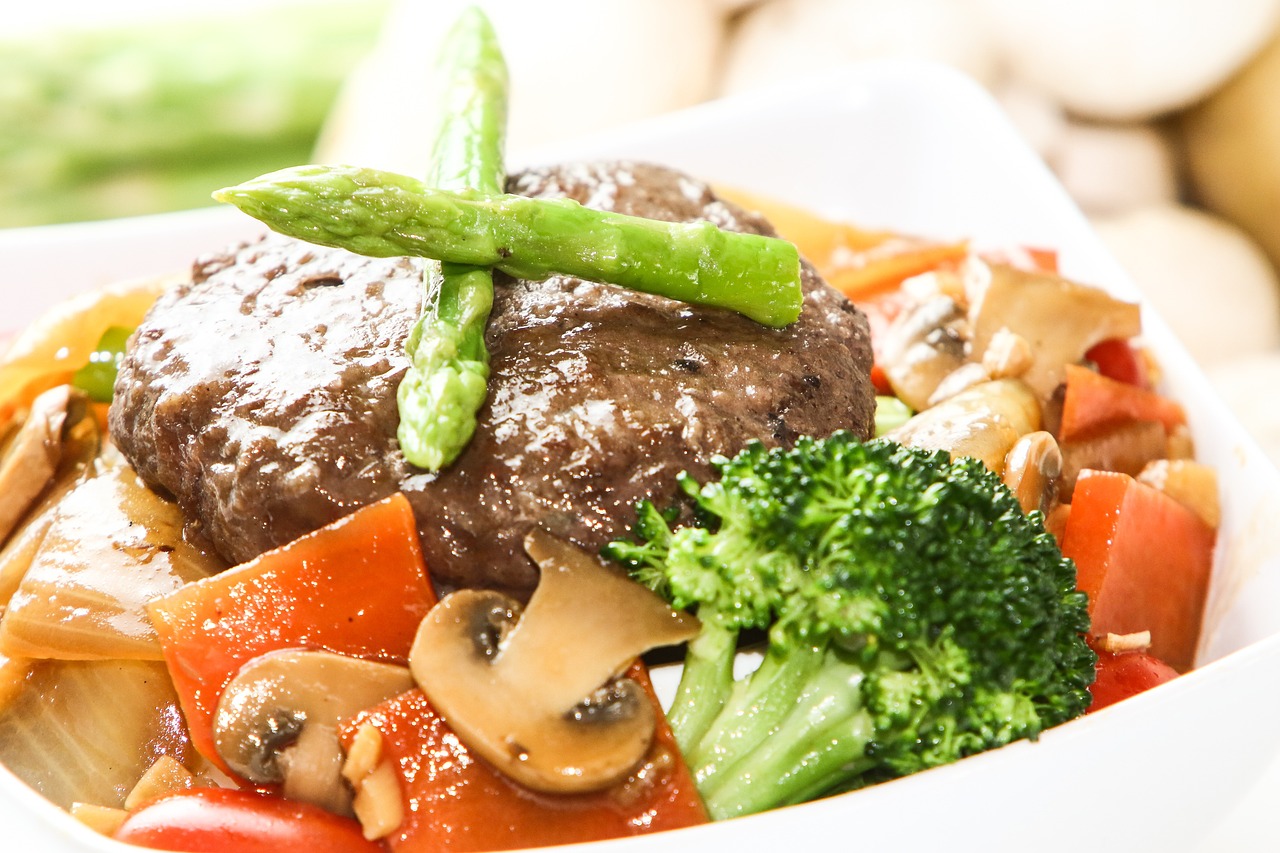
Selection of Ingredients
When it comes to preparing a delicious and authentic Chinese hot pot, selecting the right ingredients is key to creating a flavorful and satisfying meal. The beauty of hot pot lies in its versatility, allowing you to customize your dining experience with a wide array of meats, seafood, vegetables, and noodles.
One essential component of a hot pot meal is the broth, which serves as the flavorful base for cooking the ingredients. Popular options include the spicy and numbing Sichuan broth, the light and clear chicken broth, and the earthy mushroom-based broth. Each type of broth imparts its own unique taste to the hot pot, adding depth and complexity to the dish.
When choosing meats for your hot pot, opt for thinly sliced cuts such as beef, lamb, or pork that cook quickly in the simmering broth. Seafood lovers can enjoy fresh shrimp, fish balls, and squid, while vegetarians can indulge in an assortment of mushrooms, tofu, and leafy greens.
Vegetables play a crucial role in balancing the flavors and textures of the hot pot. Consider adding leafy greens like bok choy and watercress, root vegetables such as daikon and lotus root, and starchy options like sweet potatoes and taro. Noodles, whether they are thin vermicelli or chewy udon, provide a hearty addition to the meal.
To elevate the dining experience, prepare a selection of dipping sauces and condiments to complement the ingredients. Classic choices include soy sauce, sesame paste, vinegar, and chili oil, allowing each diner to customize their flavors according to their preferences.
Remember, the key to a successful hot pot lies in the freshness and quality of the ingredients. Take the time to source the best produce, meats, and seafood available to ensure a memorable and enjoyable dining experience for you and your guests.
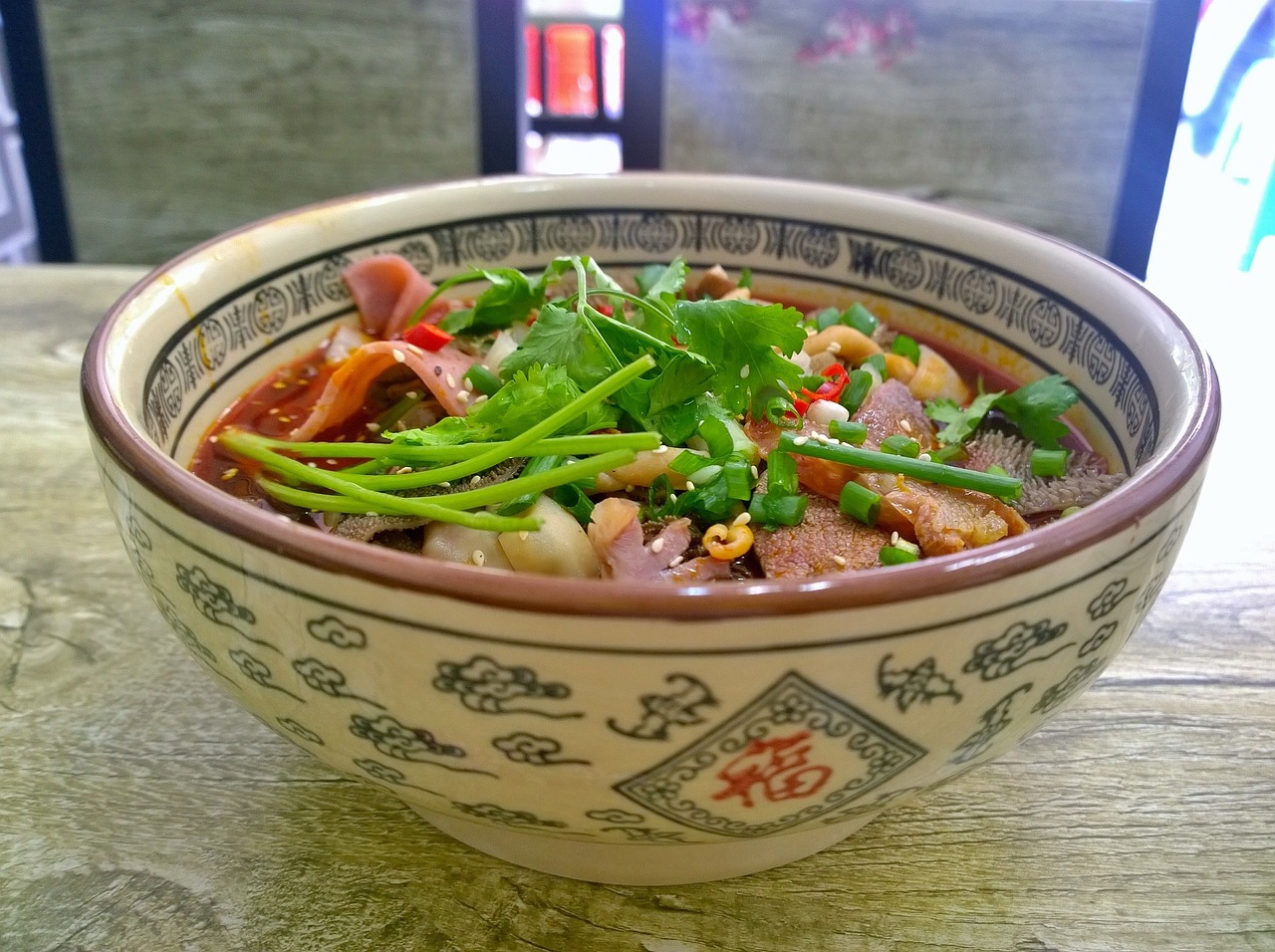
Dipping Sauces and Condiments
When it comes to enhancing your hot pot experience, dipping sauces and condiments play a crucial role in elevating the flavors of the meal. From tangy to spicy, these accompaniments offer a customizable touch to suit your taste buds. Imagine a symphony of flavors, where each dip adds a new dimension to your hot pot adventure.
One popular choice is sesame paste, a creamy and nutty sauce that adds richness to your broth. Its smooth texture complements the tender meats and fresh vegetables, creating a harmonious balance of flavors. Additionally, soy sauce brings a savory umami taste, perfect for dipping meats and tofu, while chili oil adds a fiery kick for those who crave a spicy sensation.
For those seeking a hint of sweetness, hoisin sauce offers a sweet and savory blend that pairs well with meats and seafood. The combination of soy sauce, garlic, and spices creates a complex flavor profile that tantalizes the palate. Moreover, fermented tofu provides a unique tanginess that adds depth to the hot pot experience, perfect for adventurous food enthusiasts.
Creating your own dipping sauce concoctions can be a fun and creative process. Mix and match different ingredients to find your perfect flavor combination. Whether you prefer a mild and mellow dip or a bold and zesty sauce, the possibilities are endless. Experimenting with various condiments allows you to personalize your hot pot experience and discover new taste sensations.
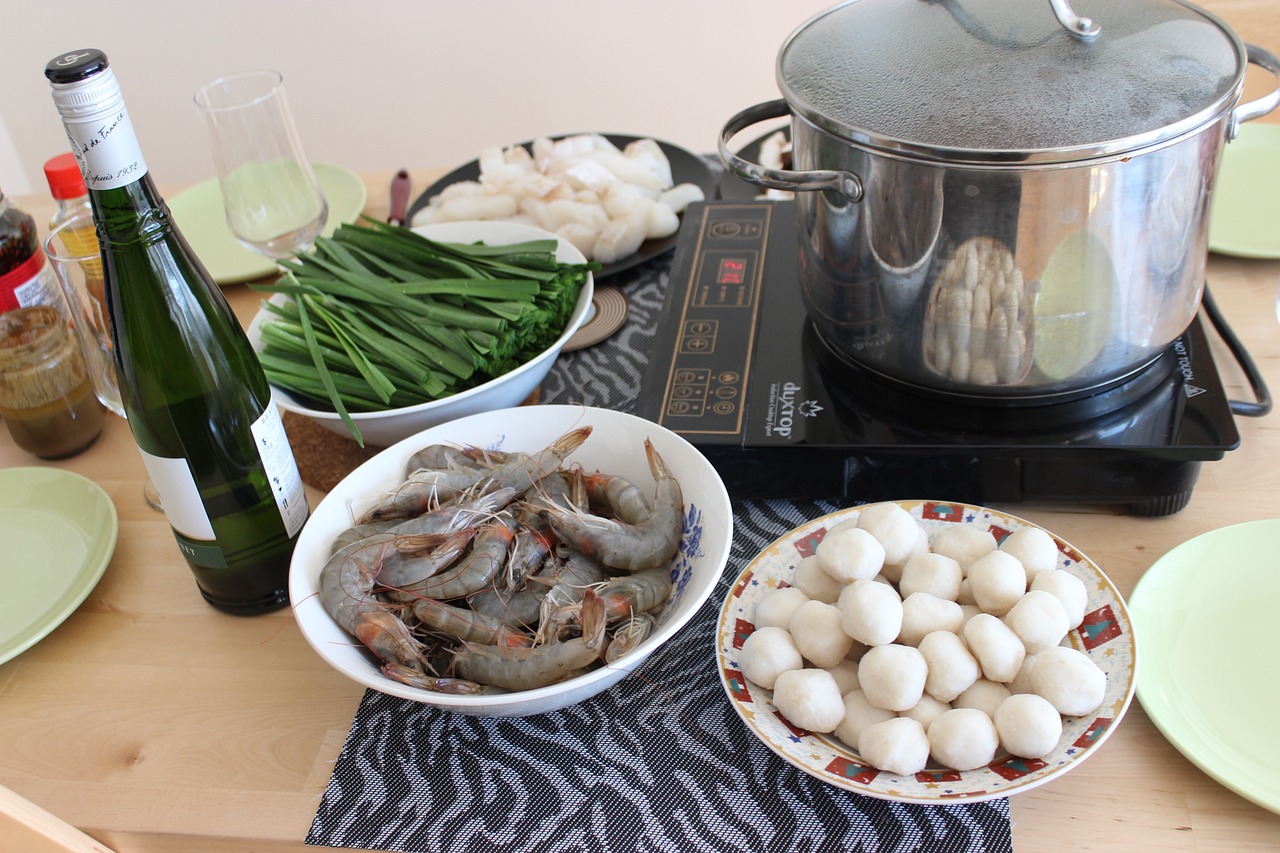
Cooking Techniques
When it comes to mastering the art of hot pot cooking, understanding the different is essential for creating a delicious and satisfying meal. The key lies in knowing how to cook various ingredients in the hot pot to achieve the perfect balance of flavors and textures.
One fundamental technique in hot pot cooking is to start with lighter ingredients that cook quickly, such as thinly sliced meats and delicate seafood. These items only need a brief dip in the simmering broth to cook through, ensuring they remain tender and flavorful.
On the other hand, heartier vegetables like potatoes, carrots, and cabbage require a longer cooking time to soften and absorb the flavors of the broth. It's important to adjust the heat level of the hot pot to maintain a gentle simmer for these ingredients to cook properly.
When it comes to noodles and dumplings, they are best added towards the end of the meal as they require a bit more time to cook through. These starchy additions not only add substance to the hot pot but also help to soak up the delicious flavors of the broth.
Another important aspect of cooking techniques in hot pot is the art of layering flavors. By adding ingredients strategically based on their cooking times and flavors, you can create a harmonious blend of tastes in the broth. For example, starting with milder ingredients like tofu and gradually adding more robust flavors like spicy sausages can enhance the overall dining experience.
Additionally, don't forget to adjust the seasoning of the broth as you cook. Taste the broth periodically and add more seasonings like soy sauce, sesame oil, or chili paste to suit your preferences. This allows you to customize the flavor profile of the hot pot according to your liking.
Overall, mastering the cooking techniques in hot pot involves a balance of timing, heat control, and flavor layering to create a memorable dining experience that delights the senses and brings people together around the communal table.
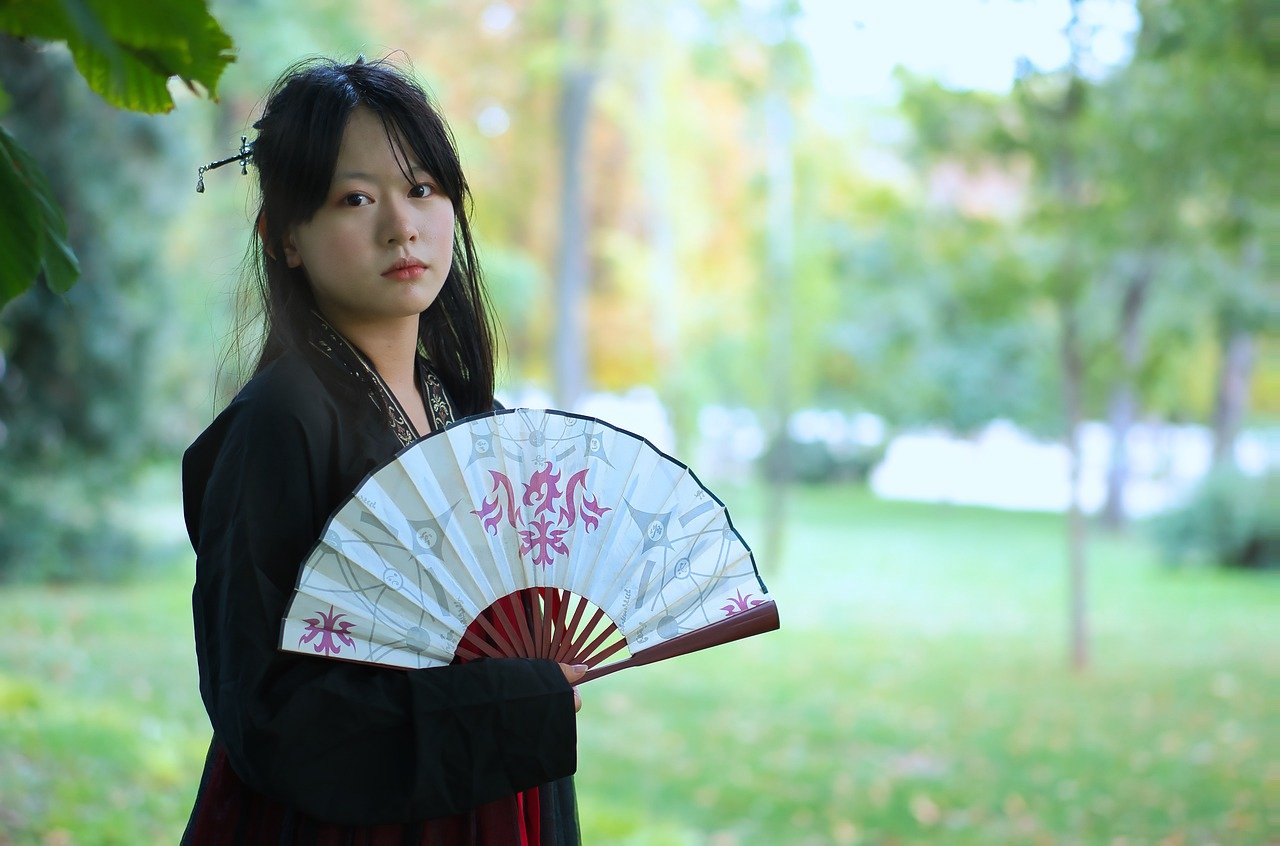
Table Etiquette and Sharing
When it comes to enjoying a traditional Chinese hot pot meal, table etiquette and sharing play a crucial role in enhancing the overall dining experience. Picture a vibrant table filled with a bubbling pot of flavorful broth at its center, surrounded by an assortment of fresh ingredients waiting to be cooked to perfection. In this communal setting, sharing is not just about passing dishes around; it's about creating a sense of togetherness and connection through food.
One essential aspect of hot pot etiquette is the art of sharing. As each person selects their desired ingredients to cook in the simmering broth, it's customary to offer to cook for others at the table as well. This act of sharing not only fosters a spirit of generosity but also ensures that everyone gets to enjoy a variety of flavors throughout the meal.
Moreover, hot pot dining encourages lively interactions and conversations among diners. As you gather around the steaming pot, take this opportunity to engage in discussions, share stories, and bond over the shared experience of cooking and enjoying a delicious meal together. The communal nature of hot pot dining emphasizes the importance of connecting with your fellow diners and savoring the moment.
Another aspect of table etiquette in hot pot dining is being mindful of others' preferences and dietary restrictions. Before adding ingredients to the pot, consider the preferences of your dining companions and ensure that there are options available to accommodate everyone's tastes. By being considerate and inclusive, you contribute to a harmonious dining atmosphere where everyone feels welcome and valued.
Furthermore, respecting the pace of the meal and allowing each person to enjoy their food at their own rhythm is key to a pleasant dining experience. Avoid rushing through the meal and instead savor each bite, appreciating the flavors and textures of the carefully prepared ingredients. By taking your time and enjoying the meal together, you create lasting memories and strengthen the bonds with your dining companions.
In essence, table etiquette and sharing in the context of Chinese hot pot go beyond mere manners; they embody the spirit of communal dining and the joy of coming together over a shared meal. By embracing these practices, you not only enhance the dining experience but also cultivate a sense of warmth, connection, and camaraderie that make hot pot meals truly special.
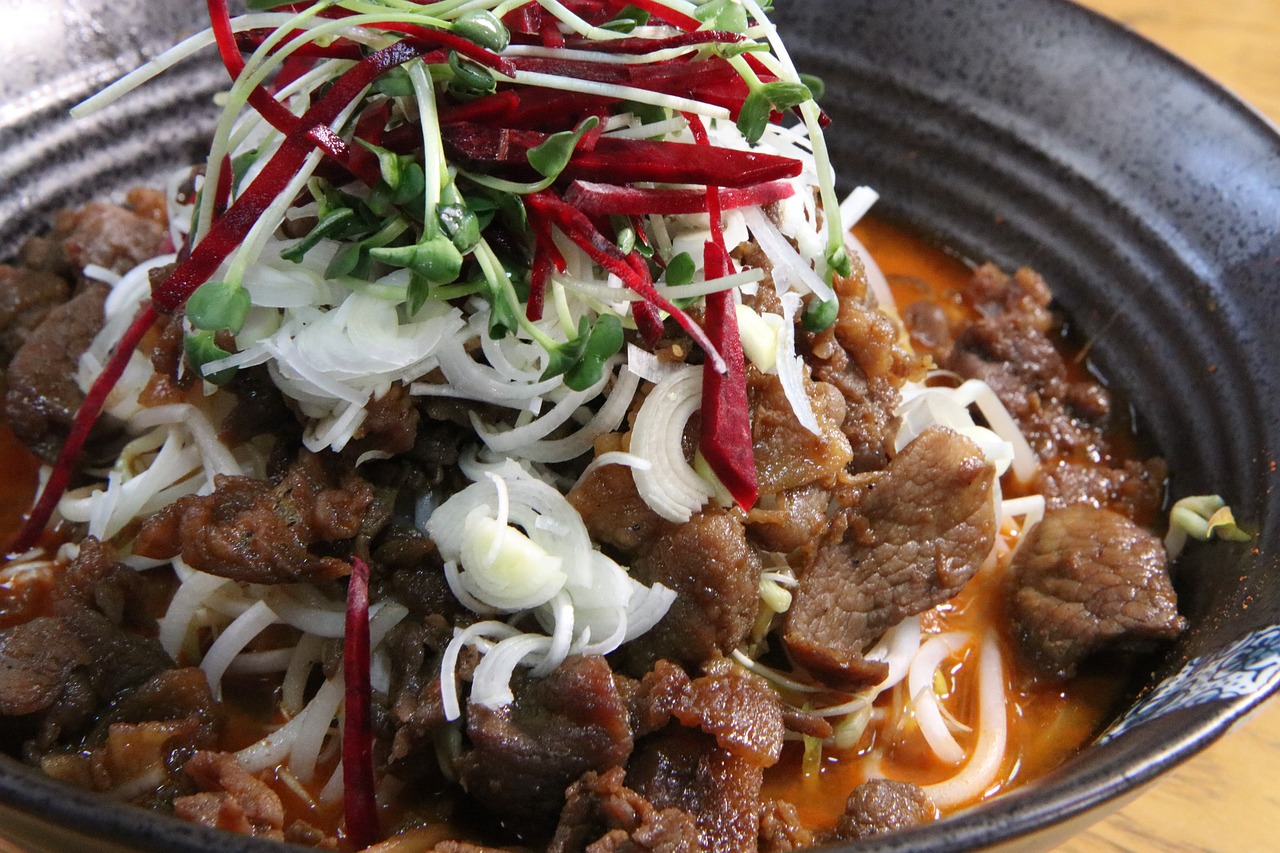
Health Benefits of Hot Pot
Hot pot is not only a delicious and communal dining experience but also offers various health benefits that may surprise you. This beloved Chinese dish is not just about indulging in flavorful broths and fresh ingredients; it also provides nourishment and warmth to both body and soul.
One of the significant health benefits of hot pot is its ability to incorporate a wide variety of ingredients, including lean meats, seafood, and an assortment of vegetables. This allows you to create a balanced meal rich in essential nutrients such as protein, vitamins, and minerals, contributing to overall well-being.
Moreover, the cooking method of hot pot involves simmering ingredients in broth rather than frying or sautéing them in oil, making it a healthier option for those looking to reduce their calorie intake. By avoiding excessive oil and focusing on fresh, natural ingredients, hot pot can be a nutritious choice for those watching their weight.
Additionally, the warm and steamy nature of hot pot can be particularly comforting during colder seasons, providing a sense of warmth and coziness that goes beyond just satisfying hunger. The nourishing properties of the broth, combined with the wholesome ingredients, can help boost immunity and promote overall wellness.
Furthermore, the communal aspect of hot pot dining encourages sharing and social interaction, which can have positive effects on mental well-being. Gathering around a steaming pot of broth, sharing stories, and enjoying good food with loved ones can create memorable experiences and strengthen relationships.
Overall, hot pot offers a unique combination of flavors, textures, and health benefits that make it a popular choice for those seeking a satisfying and nourishing meal. So, next time you gather around a hot pot table, savor not only the delicious food but also the potential health benefits it brings to the table.
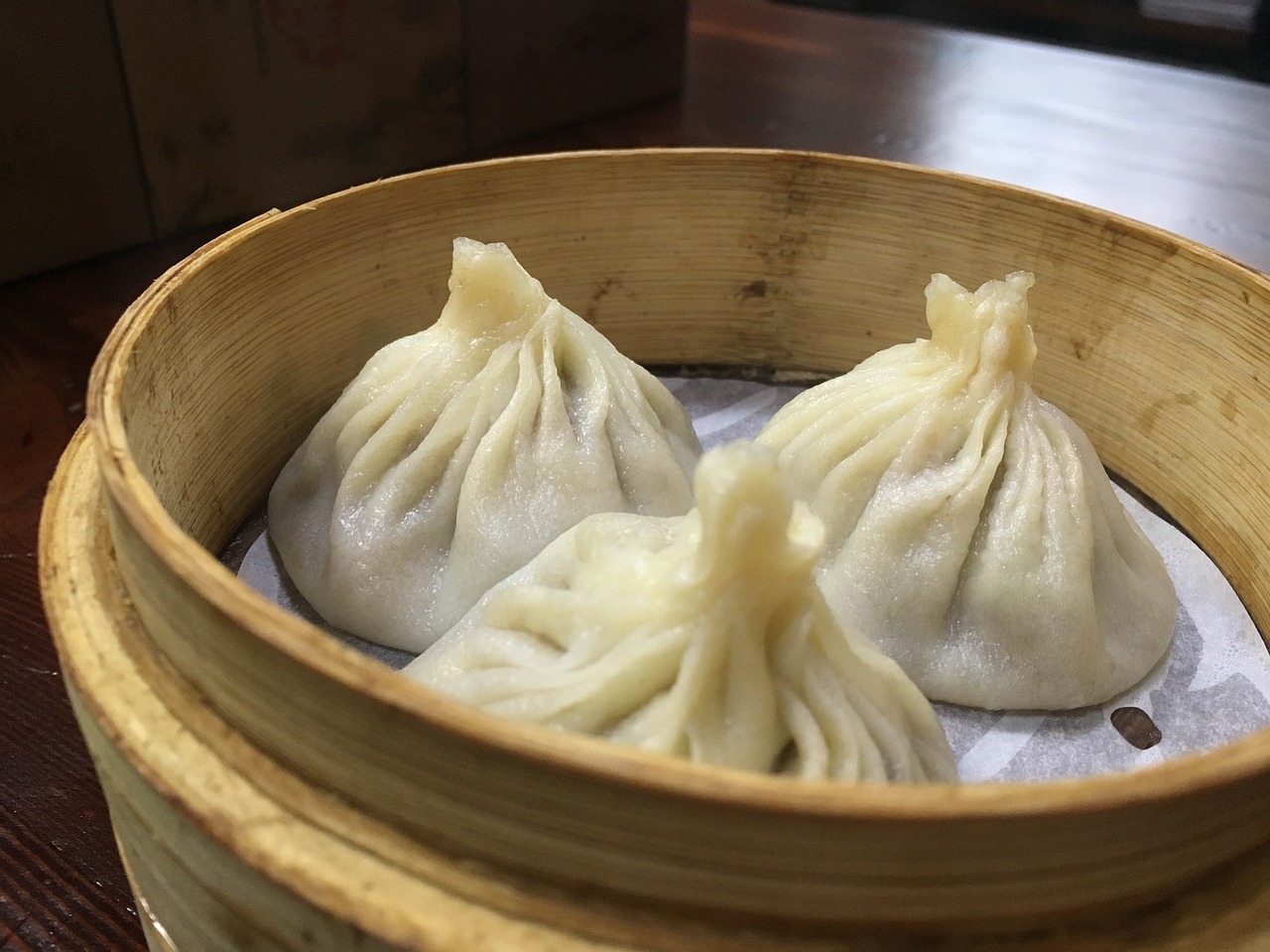
Tips for Hosting a Hot Pot Party
Hosting a hot pot party is a delightful way to gather friends and family for a cozy and interactive dining experience. To ensure your event is a success, consider these essential tips for hosting a memorable hot pot gathering.
First and foremost, set the stage for your hot pot party by arranging a spacious and comfortable dining area. Make sure there is enough room for everyone to sit around the hot pot table with easy access to the broth, ingredients, and condiments.
Prepare the ingredients in advance to streamline the cooking process during the party. Slice the meats, chop the vegetables, and arrange everything neatly on platters for easy access. This will allow you to focus on enjoying the meal and socializing with your guests.
When selecting a hot pot cooker, opt for a communal pot that can accommodate multiple broths and has individual compartments for different cooking preferences. This way, everyone can enjoy their favorite broth and customize their meal according to their taste.
Encourage your guests to participate in the cooking process by taking turns adding ingredients to the hot pot. This interactive element adds to the fun and communal spirit of the meal, creating a shared experience that everyone can enjoy.
Provide a variety of dipping sauces and condiments to enhance the flavors of the hot pot. From classic soy sauce and sesame paste to spicy chili oil and tangy vinegar, offer a range of options for guests to customize their dipping experience.
Keep the conversation flowing by engaging your guests in lively discussions and sharing stories while enjoying the meal. Hot pot dining is not just about the food but also about the connections and memories created around the table.
Lastly, ensure that everyone follows proper hot pot etiquette, such as using separate utensils for raw and cooked foods, not overcrowding the pot, and being mindful of others' cooking times. By respecting these guidelines, you can create a harmonious and enjoyable dining experience for all.
Frequently Asked Questions
- What is the origin of Chinese hot pot?
Chinese hot pot has a rich history dating back to ancient times, where it was originally used as a way to cook food in a communal setting. Over the years, it has evolved into a popular dining experience enjoyed by people around the world.
- What are the different types of hot pot broths?
There are various types of hot pot broths, including spicy Sichuan, clear chicken, and mushroom-based options. Each broth offers a unique flavor profile, allowing diners to customize their hot pot experience according to their preferences.
- How do I choose the best ingredients for hot pot?
When selecting ingredients for hot pot, opt for fresh and high-quality meats, seafood, vegetables, and noodles. The key is to choose ingredients that cook well in the hot pot and complement the broth flavors for a delicious meal.
- What are some popular dipping sauces for hot pot?
Popular dipping sauces for hot pot include sesame paste, soy sauce, chili oil, and more. These condiments add extra flavor to the ingredients and allow diners to create their own unique combinations to enhance the overall dining experience.
- How can I ensure a successful hot pot party?
To host a successful hot pot party, prepare the dining area with all necessary equipment, ingredients, and condiments. Make sure to communicate with your guests about any dietary restrictions and preferences to ensure everyone has an enjoyable and memorable experience.





